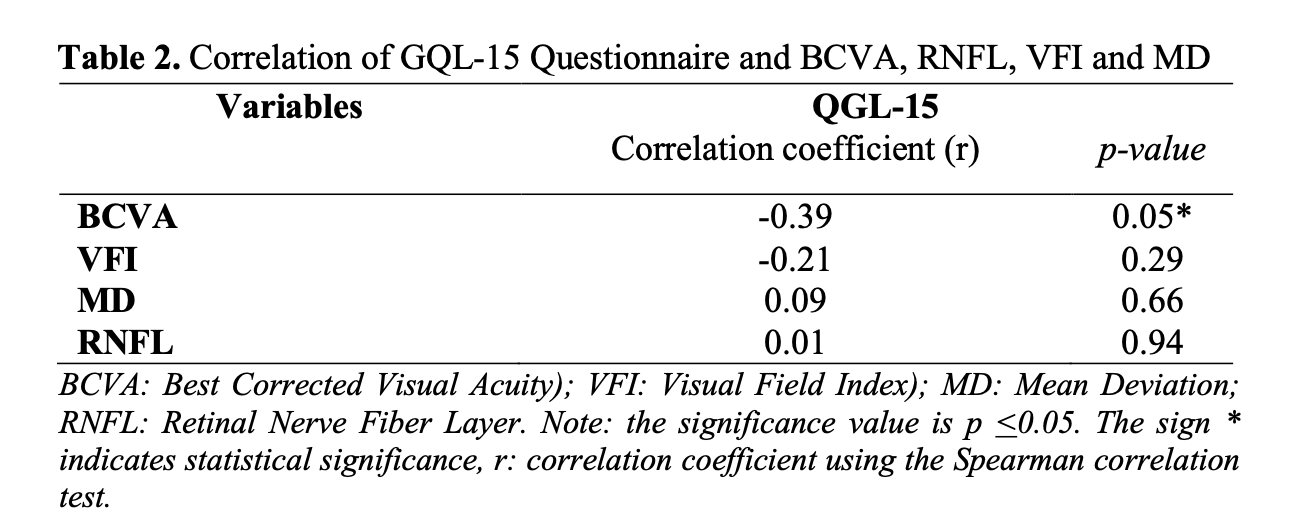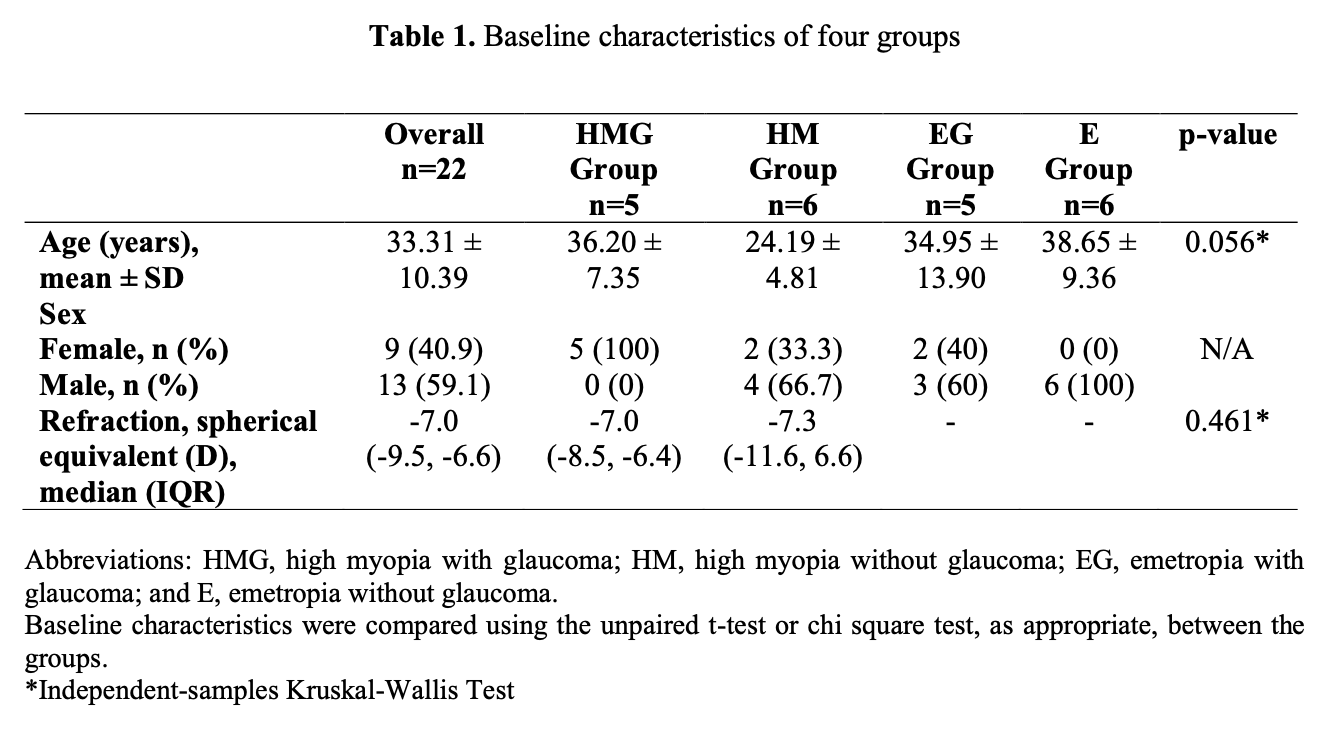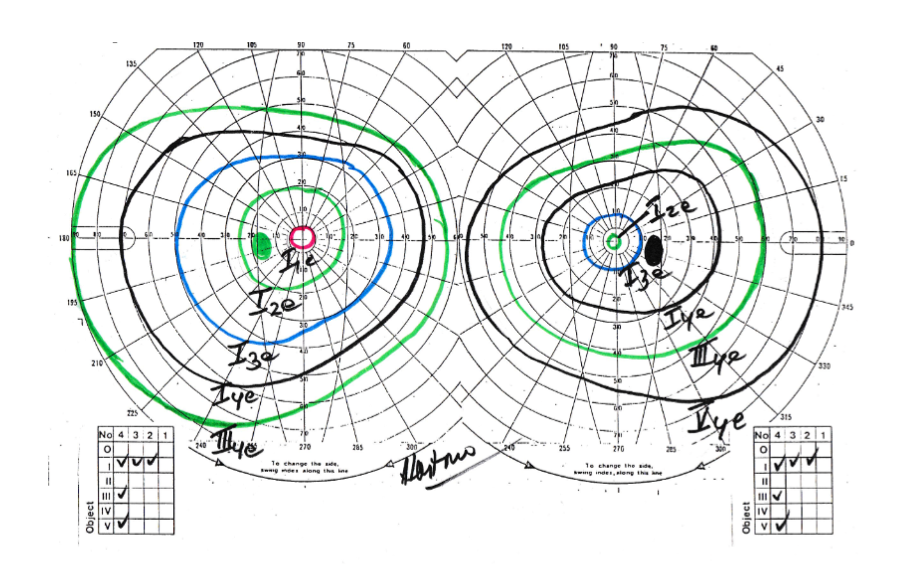CORRELATION OF STRUCTURE AND FUNCTIONAL DEFECT WITH QUALITY OF LIFE IN PATIENT WITH GLAUCOMA
DOI:
https://doi.org/10.35749/7rn3zx09Keywords:
Glaucoma Quality of Life-15, OCT, Visual Field IndexAbstract
Introduction: Glaucoma damage generally produces a characteristic change in the morphology of the optic nerve, runs progressively and permanently that cause visual changes, decreased vision, and blindness. Blindness will affect one’s dependence to get help in their daily activities. This paper investigate the correlation between VFI, BCVA, MD and RNFL thickness with the quality of life of people with glaucoma using Glaucoma Quality of Life-15 (GQL-15).
Methods: A cross-sectional study conducted at the Sardjito Eye Center in April 2021. Purposive sampling used to recruit glaucoma patients who had BCVA, Visual Field examination (Humphrey Field Analyzer (HFA) 3 Carl Zeiss Meditec Inc.), and OCT ONH (Cirrus HD-OCT 5000, Carl Zeiss). Glaucoma Quality of Life-15 (GQL-15) questionnaire were used to interview the patients.
Results: Eight (32%) normotension glaucoma and 17 (68%) open angle glaucoma patients were included. Fifteen (60%) patients aged 17-40 y.o, 7 (28%) aged 41-60 y.o and 3 (12%) aged > 60 y.o were included. Majority of the samples 6 of them were unemployed (24%), 5 entrepreneurs 5 (20%) and 5 students (20%). GQL-15 score was significantly correlated with respondent's BCVA r= -0.39 (p= 0.05). However, there was no correlation between GQL-15 with RNFL r= 0.01 (p=0.94), VFI r= -0.21 (p= 0.29) and MD with r=0.09 (p= 0.66) respectively. It showed that VFI and GQL-15 has negative correlation with a correlation coefficient of -0.21 (p=0.29). Subscale score related to central and near was significantly correlated with VFI (p= 0,05) and MD (p= 0,03).
Conclusion: There was a significant correlation between GQL-15 subscale score of central and near vision with VFI and MD. Subjects with lower VFI and MD tend to have worse problem with central and near vision. Total GQL-15 score has a weak negative correlation with BCVA and MD. There was no correlation between GQL-15 with VFI and RNFL.
Downloads
References
Cantor LB, Rapuano CJ, Cioffi GA, et al. Open-Angle Glaucoma. American Academy of Ophthalmology The Eye M.D. Association Glaucoma 10th Section. San fransisco: LEO. 2018;62.
Heijl A, Vincent M P, Bengtsson B, et al. Effective Perimetry. Fourth Edition. Dublin, CA: Carl Zeiss Meditec Inc. 2012;1-22,45-72.
Hirneiß C, Vogel M, Kampik A. Measurement of glaucoma-specific functional ability with the GQL-15 and correlation with functional parameters of vision. Ophthalmologist. 2011;108:939-946.
Ilahi F, Liyanti R. Quality of Life Assesment of Glaucoma Patients Based on Glaucoma Symptom Scale and Glaucoma Quality of Life – 15 Score at M. Djamil Hospital Padang. Ophthalmol Ina. 2017; 43(1):57-62.
Lee JW, Chan CWS, Chan JCH, et al. The association between clinical parameters and glaucoma-specific quality of life in Chinese primary open angle glaucoma patients. Hong Kong Med J. 2014;20(4):274-277.
Naveen B , Smitha. VK , Mithun Pai , Shilpa N. Assessing Quality of Life in Patients with Glaucoma Using the Glaucoma Quality of Life -15 (GQL-15) Questionnaire in Indian eyes. International Journal of Health Sciences & Research. 2014.
Nelson, P et al. Quality of Life in Glaucoma and Its Relationship with Visual Function, Journal of Glaucoma. 2003;12(2):139-150.
Sawada H, Fukuchi T, Abe H. Evaluation of the relationship between quality of vision and the visual function index in Japanese glaucoma patients. Graefe’s Archive for Clinical and Experimental Ophthalmology. 2011;249(11):1721–1727.
Spaeth G, Walt J, Keener J. Evaluation of quality of life for patients with glaucoma. American journal of ophthalmology. 2006;141(1):3-14.
WHOQOL Group. Development of the World Health Organization WHOQOL-BREF quality of life assessment. Psychol Med. 1998;28:551-558.

Downloads
Published
Issue
Section
Categories
License
Copyright (c) 2024 Meta Rahma An Nazzila, Krisna Dwi Purnomo Jati, Retno Ekantini, Tatang Talka Gani

This work is licensed under a Creative Commons Attribution-NonCommercial-ShareAlike 4.0 International License.


